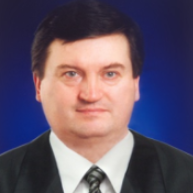International Journal of Intelligent Systems and Applications (IJISA)
IJISA Vol. 17, No. 4, 8 Aug. 2025
Cover page and Table of Contents: PDF (size: 569KB)
Geodesic Curves Simulation on a Transcendental Surface with a Cycloidal Generatrix Using the Calculus of Variations
PDF (569KB), PP.14-24
Views: 0 Downloads: 0
Author(s)
Index Terms
Geodesic Curve, Calculus of Variations, Transcendental Surface, Cycloid, 3D Modeling, Route Optimization, Navigation, Computational Geometry, Euler’s Equation, Boundary Value Problem, Simulation
Abstract
This article introduces a novel variational approach for solving the inverse geodesic problem on a transcendental surface shaped as a cylindrical structure with a cycloidal generatrix, a type of geometry that has not been previously studied in this context. Unlike classical models that rely on symmetric surfaces such as spheres or spheroids, this method formulates the geodesic path as a functional minimization problem. By applying the Euler–Lagrange equation, an analytical integration of the corresponding second-order differential equation is achieved, resulting in a parametric expression that satisfies boundary conditions. The effectiveness of the proposed method for computing geodesic curves on transcendental surfaces has been rigorously evaluated through a series of numerical experiments. Analytical validation has been carried out using MathCad, while simulation and three-dimensional visualization have been implemented in Python. Numerical experiments are conducted and 3D visualizations of the geodesic lines are presented for multiple point pairs on the surface, demonstrating the accuracy and computational efficiency of the proposed solution. This enables a closed-form analytical representation of the geodesic curve, significantly reducing computational complexity compared to existing numerical-heuristic methods.
The obtained results offer clear advantages over existing studies in the field of computational geometry and variational calculus. Specifically, the proposed method enables the construction of geodesic curves on complex transcendental surfaces where traditional methods either fail or require intensive numerical approximation.
The analytical integration of geodesic equations enhances both accuracy and performance, achieving an average computational cost reduction of approximately 27-30% and accuracy improvement of around 20% in comparison with previous models utilizing non-polynomial metrics. These enhancements are especially relevant in applications requiring real-time response and precision, such as robotics, CAD systems, computer graphics, and virtual environment simulation. The method’s ability to deliver compact and exact solutions for boundary value problems positions it as a valuable contribution for both theoretical and applied sciences.
Cite This Paper
Viktor Legeza, Liubov Oleshchenko, Andrii Dychka, "Geodesic Curves Simulation on a Transcendental Surface with a Cycloidal Generatrix Using the Calculus of Variations", International Journal of Intelligent Systems and Applications(IJISA), Vol.17, No.4, pp.14-24, 2025. DOI:10.5815/ijisa.2025.04.02
Reference
[1]Vincenty T. Direct and inverse solutions of geodesics on the ellipsoid with application of nested equations. Survey Review, 1975, 23(176), 88–93. https://doi.org/10.1179/sre.1975.23.176.88
[2]Rapp R.H. Geometric Geodesy, Part 2, 1993. 177 p.
[3]Karney C.F. Algorithms for geodesics. J. Geodesy, 2013, 87(1): 43–55. https://doi.org/10.1007/s00190-012-0578-z.
[4]Waters T.J. Regular and irregular geodesics on spherical harmonic surfaces. Physica D: Nonlinear Phenomena, 2011, 241: 543-552. https://doi.org/10.1016/j.physd.2011.11.010.
[5]Kovacic J. An algorithm for solving second order linear homogeneous differential equations. J. Symb. Comput., 1986, 2(1): 3–43. https://doi.org/10.1016/S0747-7171(86)80010-4.
[6]Bowring B.R. The central projection of the spheroid and the surface line. Survey Review, 1997, 34 (265), 163–173. https://doi.org/10.1179/SRE.1997.34.265.163.
[7]Rainsford H.F. Long geodesics on the ellipsoid. Bull. Géod., 1955, 37: 12–22. doi:10.1007/BF02527187.
[8]Deakin R.E. and Hunter M.N. Geodesics on an ellipsoid – Bessel’s Method. School of Mathematical & Geospatial Sciences, RMIT University, GPO Box 2476V, Melbourne, Australia. 3rd edition: July 2023.
[9]Phadke A.G. Synchronized phasor measurements in power systems. EEE Computer Applications in Power, 1993, vol. 6, no. 2, pp. 10-15, doi: 10.1109/67.207465.
[10]Phadke A.G., Pickett B., Adamiak M., et al. Synchronized sampling and phasor measurements for relay and control. IEEE Trans. Power Delivery, 2014, 9(1): 442–452. DOI:https://doi.org/10.1109/61.277716.
[11]Crane K., Weischedel C., Wardetzky M. Geodesics in Heat: A New Approach to Computing Distance Based on Heat Flow. ACM Trans. Graphics, 2013, 32(5): 152. https://doi.org/10.1145/2516971.2516977.
[12]Solomon J., Rustamov R., Guibas L. Earth Mover’s Distances on Discrete Surfaces. ACM Trans. Graphics, 2014, 33(4): 67. ttps://doi.org/10.1145/2601097.260117.
[13]Boscaini D., Masci J., Bronstein M.M., et al. Learning Shape Correspondence with Anisotropic Convolutional Neural Networks. NeurIPS, 2016. https://doi.org/10.48550/arXiv.1605.06437.
[14]Legeza V. Brachistochronic Motion of a Material Point on a Transcendental Surface. Int. Appl. Mech., 2020, 56(3): 358–366. https://doi.org/10.1007/s10778-020-01019-5.
[15]Wei Liu, Pengfei Wang, Shuangmin Chen, Shiqing Xin, Changhe Tu, Ying He, Wenping Wang, Towards geodesic ridge curve for region-wise linear representation of geodesic distance field, Computer Aided Geometric Design, Volume 111, 2024, 102291, ISSN 0167-8396, https://doi.org/10.1016/j.cagd.2024.102291.


